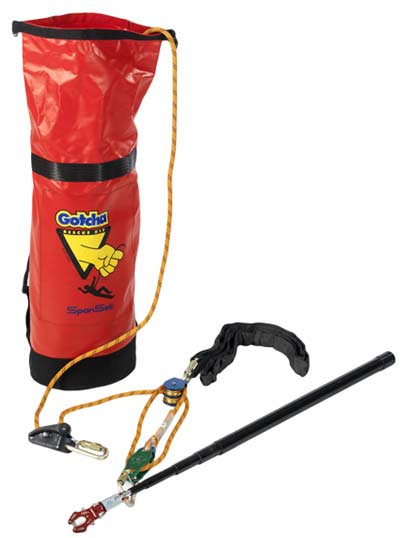Fall Protection
It is our recommendation that fall protection always be used when working in overhead situations. Many times when working up at trim height there are not convenient lifelines or proper fall protection anchorage points within existing facilities. Other times the structures may be outdoors and the only option a rigger has while working is to clip off to the aluminum truss. There are dozens of other scenarios in which the aluminum truss may be required as a fall protection anchor. When working in these situations several important issues must be addressed prior to anchoring yourself to the truss.
First, is the truss capable of supporting the stress incurred from a fall given its current load application? In other words, if a span of truss is already supporting a considerable amount of load is there enough capacity left in the truss to safely arrest a fall. After all, what good would the truss be to a rigger as an anchor point if the shock loading from the fall only brought the truss down on top of them? Load tables are provided for
industry standard trusses by reputable manufacturers. Refer to these tables to ensure that there is a minimum of 1,000 pounds of additional capacity available in the truss before climbing up and anchoring to a truss. To re-emphasize this very important point, if the truss is not capable of supporting its current load AND another 1,000 pounds it is our recommendation that workers do not anchor to it as a means of fall protection.
Second, is the system as a whole capable of supporting the stress incurred from a fall? In this situation there may be an instance where an outdoor roof system is loaded unsymmetrically and does not have the additional capacity required to arrest a fall. For instance, often times PA Wings are used on outdoor roof systems and the towers onstage of the PA Wings may already be loaded up to capacity. The lighting truss spanning cross stage, where a rigger might be required to work before or between shows, could potentially have the capacity to support a fall, but the tower it is sitting on does not. This is certainly a rare situation, but we present this scenario to raise awareness about using systems for fall protection. In the end it may be much safer to use a lift rather than climb on the system.
Third, in the event you find yourself anchored to a truss it is important that the anchor point is at an appropriate location. An appropriate location on a typical truss is at a panel point. The panel point, also referred to as a node, is the location where two or more members are welded together on the truss. A good example of a panel point is the location where the two diagonals are welded to the chord of the truss.


